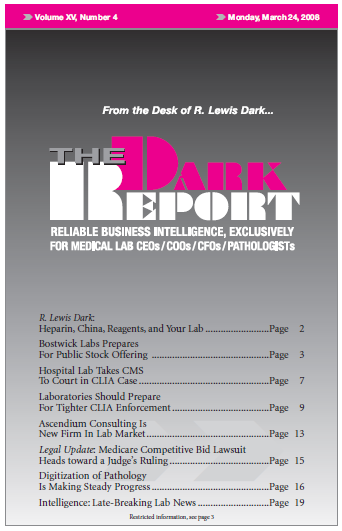CEO SUMMARY: Pathology digitization incorporates a greater scope of work-changing technologies than telepathology. It incorporates information technology, new diagnostic knowledge, and other engineering innovations to help pathologists move past glass and paper. Existing digital pathology systems are already helping pathologists reduce their travel from site to site by enabling them to view digitized images from …
Digitization of Pathology Is Making Steady Progress Read More »
To access this post, you must purchase The Dark Report.


